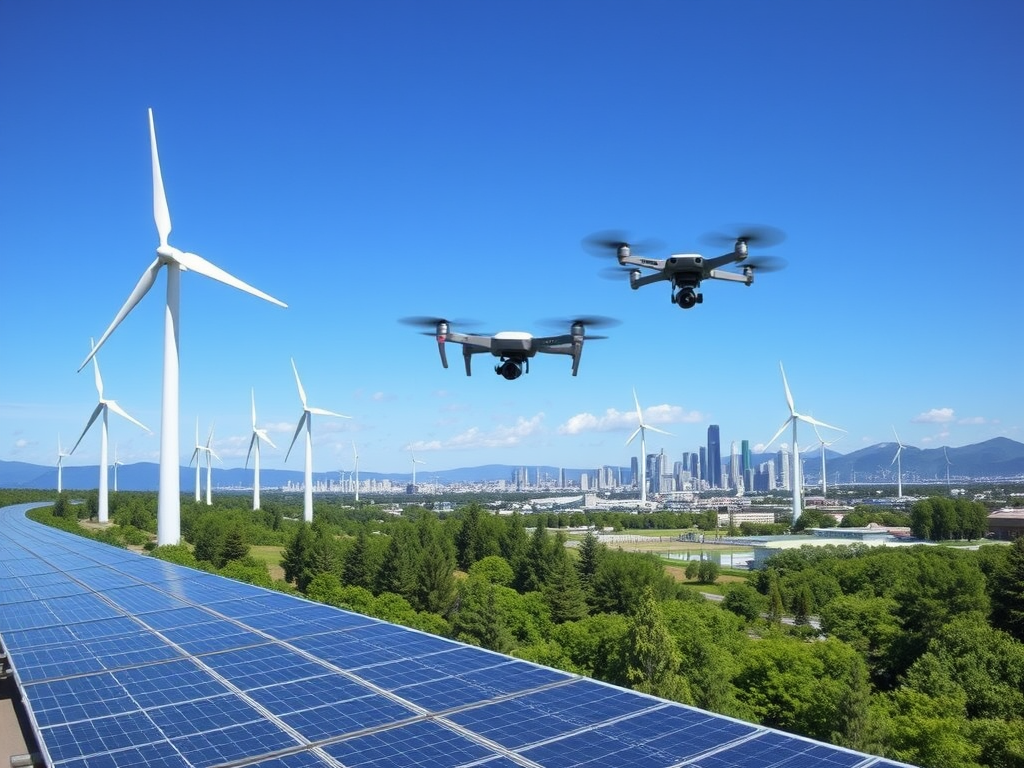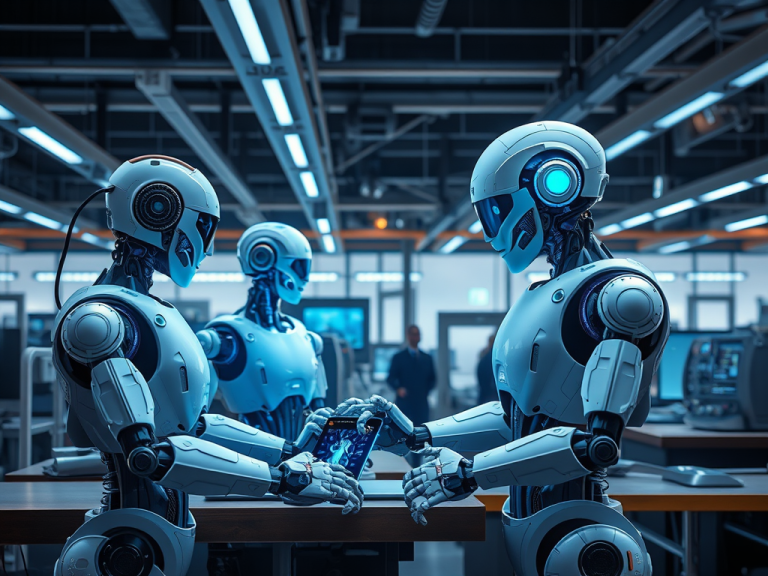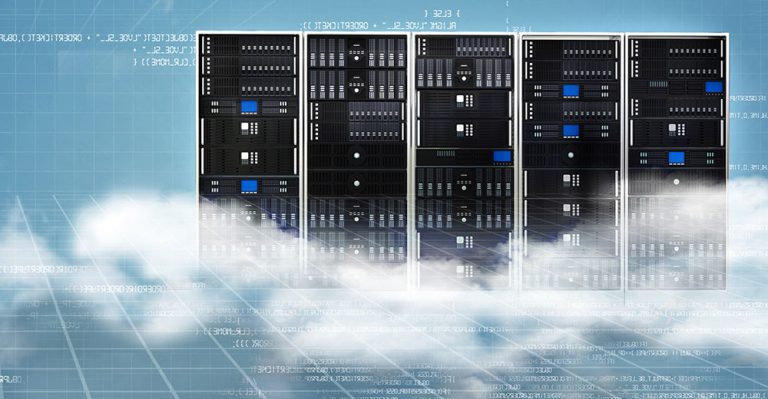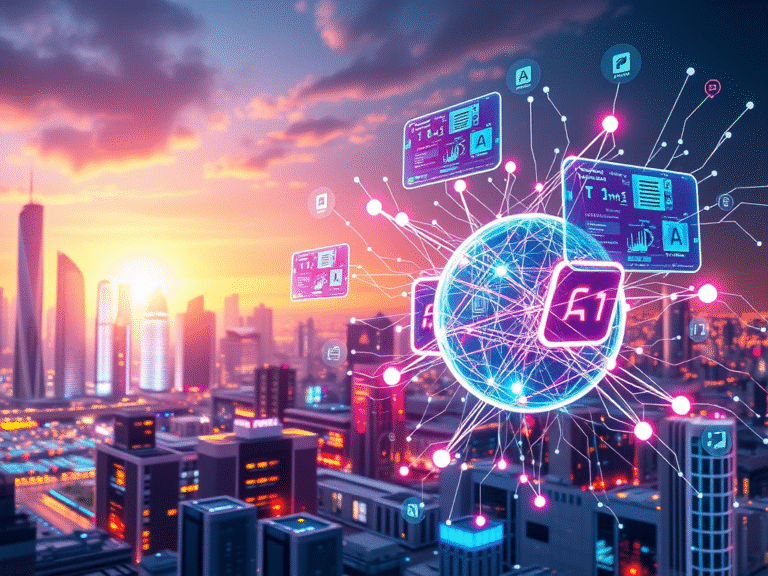Artificial intelligence is no longer just a futuristic concept. In 2025, it is at the center of the global push for cleaner, smarter energy. From optimizing solar and wind output to enabling smart grids and homes, AI in green energy is transforming how we produce, distribute, and consume electricity. This is the green energy revolution, and AI is driving it forward.

AI in Green Energy Makes Smart Grids Smarter
Electric grids were once static systems. They delivered energy one way and reacted slowly to changes. Today, AI in green energy powers smart grids that are dynamic and adaptive. They respond to real-time shifts in energy demand and supply.By analyzing usage patterns, AI helps grid operators balance energy loads more efficiently. When energy use spikes, the system can shift resources or reduce strain automatically. This prevents outages and reduces the need for fossil fuel backups.In the United Kingdom, companies like Octopus Energy are using AI to monitor demand and adjust supply in real time. Their AI-driven platforms encourage users to shift usage to off-peak hours. This saves money and eases pressure on the grid.
AI in Green Energy Makes Renewables More Reliable
Solar and wind energy are clean, but they are inconsistent. Weather changes can disrupt energy output. AI in green energy solves this by improving renewable forecasting.Machine learning models analyze weather data and satellite inputs. This allows power providers to predict drops or surges in solar and wind output before they happen. Better forecasts help grids plan ahead and reduce energy waste.In places like Texas and California, AI-powered tools are helping wind farms and solar panels operate more efficiently. This makes renewable energy more predictable and dependable.
Energy Storage Becomes Smarter with AI in Green Energy
Storing clean energy is just as important as producing it. AI plays a key role in battery management. It helps decide when to store power and when to release it.AI in green energy is now embedded in smart storage systems across homes and commercial buildings. These systems learn usage habits and align storage schedules to reduce costs and carbon emissions.In California, AI-powered batteries store solar energy during the day and release it at night when demand peaks. This maximizes solar usage and supports a greener grid.
AI in Green Energy Helps Create Energy-Efficient Homes
Our homes are becoming intelligent ecosystems. AI in green energy powers smart thermostats, lights, and appliances that respond to daily routines.These AI systems adjust temperatures, turn off unused lights, and reduce appliance loads during peak hours. This leads to lower energy bills and reduced emissions without sacrificing comfort.In Canada, AI-driven energy monitors give residents live insights and personalized energy-saving tips. More households are now meeting sustainability goals using these tools.
AI in Green Energy Shapes Smart Cities
Cities consume vast amounts of energy, but they are also key to the energy transition. AI in green energy is the backbone of modern smart cities.From optimizing streetlights to managing EV charging stations, AI helps urban centers cut energy waste. In Melbourne and Toronto, AI systems adjust lighting based on pedestrian movement and weather.Traffic and public transportation networks also benefit. AI improves routing to reduce fuel use and pollution. As cities grow, intelligent infrastructure is essential for sustainability.
Reducing Carbon Footprints with AI in Green Energy
Tackling climate change means cutting carbon emissions across sectors. AI in green energy helps detect waste and suggest improvements.Factories, farms, and delivery services now use AI to track energy use and emissions. AI detects leaks, recommends maintenance, and identifies energy-intensive processes.Companies also use AI platforms to measure carbon output across their supply chains. These tools help businesses reach climate goals and operate more sustainably.
Edge AI Enhances AI in Green Energy Applications
Edge AI is a major 2025 trend. It processes data locally, making AI in green energy faster and more efficient.Wind turbines and solar systems now include edge AI chips. They adjust performance instantly without needing cloud access. This is especially valuable in remote locations with poor internet.Edge AI also increases system reliability and saves energy by reducing data transfer. It is making smart energy systems even smarter.
Green Jobs Boom with AI in Green Energy
Some fear AI will replace jobs, but AI in green energy is creating them. As clean tech grows, so does demand for skilled workers.Engineers, software developers, and data analysts are needed to build and manage AI energy systems. Governments in the U.S., U.K., and Australia are investing in training to fill these roles.Green energy powered by AI is not only environmentally smart, but economically strong.
Challenges Facing AI in Green Energy
While the progress is impressive, AI in green energy still faces issues. These include data security, privacy concerns, and unequal access to smart tools.Not all communities have the infrastructure to adopt AI-powered systems. Bridging this gap is critical for a just and global green transition.There’s also the energy cost of AI itself. Training AI models requires power. The tech industry must ensure its own sustainability as it helps the world go green.
Conclusion: AI in Green Energy Leads the Future
The future of power is both clean and intelligent. AI in green energy is not just improving technology. It is reshaping how we think about energy use, sustainability, and climate solutions.From homes to entire cities, AI is making green energy reliable, efficient, and accessible. The green energy revolution is well underway, and AI is its driving force.







